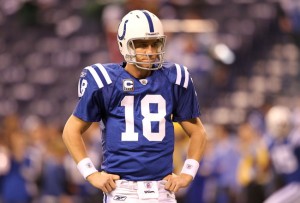Slideshows that work: Four good ways to use the format
 Here are some really good slideshows that show different ways of using the format to present useful, interesting information in an entertaining way.
Here are some really good slideshows that show different ways of using the format to present useful, interesting information in an entertaining way.
First up is Michael Pinto’s review of the best and worst new uniforms in NBA history.
Taking off from today’s announcement of the Washington Wizards’ new duds, Pinto walks us through the decades with rompers from the sublime to the ridiculous, or from the current Golden State Warriors to the 1995 Toronto cartoon Raptors, if you’d like.
Pinto sets up his premise quickly and clearly in his lede, and then gives us a little bit of information and some opinion on each slide. Not much is needed — the images of the uniforms are the main event here. Too many words would bog the reader down.
My only criticism — I mean other than saying that as a Kings fan, I liked those silky retro gold numbers in 2005 — is one that I think all Bleacher Report writers would do well to note: In this slideshow, “ever” only covers 1983 to the present.
I lived through the ’70s. If you’re talking about the way things looked, a “worst ever” review that neglects the ’70s is missing something. And the NBA had two decades of good and bad uniforms before that.
Let’s face it: It’s a lot easier to find images from about the mid-’90s forward than other times. That’s when the Internet came around, and here at Bleacher Report, that’s when our photo service, Getty Images, launched. It also takes more work to go beyond our own experience and memory and talk about things that happened before our own time.
But if we’re talking about “all time” or “ever,” we have to mean it.
Next up is a 2012 NFL mock draft by Matt Miller.
Again, Miller gets right to the point with a good lede — though I think I’d have gotten even quicker to the point by losing that first paragraph — and then offers a ton of information on each slide.
 We readers are much more likely to want a lot of information on a slideshow like this, one in which it’s likely we don’t know much about most or even all of the players involved.
We readers are much more likely to want a lot of information on a slideshow like this, one in which it’s likely we don’t know much about most or even all of the players involved.
Speaking of a lot of information, here’s Tyler Horner ranking the top 100 quarterbacks in the NFL. That is: Right now! Including draft picks.
Horner knows his quarterbacks, going three and four deep on various teams’ depth charts, and he passes that knowledge along with at least a quick scouting report on everyone who might possibly take a snap in 2011, should the season happen.
The players in the bottom half of the top 100 are presented 10 to a page, with each of the top 50 getting his own slide. As Horner himself says in the comments, this ranking represents a lot of research by him, and it’s presented well.
I would again make my one mild criticism about the lede. Horner writes several short paragraphs about how important the quarterback position is. But we sports fans know that, don’t we? The mantra for writing good ledes: Get right to the point of this story.
 Finally, one that’s almost a week old. I’ve been on a short vacation, which is why the blog’s been quiet. But I wanted to point out John Phen’s recap of Game 3 of the San Jose Sharks-Detroit Red Wings series.
Finally, one that’s almost a week old. I’ve been on a short vacation, which is why the blog’s been quiet. But I wanted to point out John Phen’s recap of Game 3 of the San Jose Sharks-Detroit Red Wings series.
Phen shows how the slideshow format doesn’t have to be limited to lists and rankings. He breaks his game recap down into seven slides, and they aren’t gratuitous. They are a logical extension of how Phen organized his story.
He has an introduction and a basic game recap, and then slides on, from the Sharks’ perspective, what worked, what didn’t work, the top line, the goalie and what’s next. It turns a 1,500-word piece, which likely would have felt a bit ponderous as a single standard article, into seven digestible chunks, an introduction and six discrete topics.
It’s a long way from the old inverted pyramid — and that’s a good thing.
Comments are closed.

